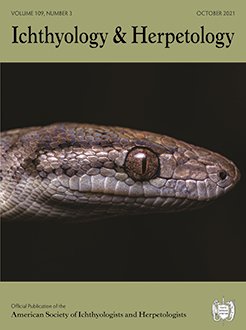Night frogs of the genus Nyctibatrachus are endemic to the Western Ghats of southern India, and these frogs exhibit unique courtship and spawning behavior. Herein, we studied the breeding biology of Nyctibatrachus humayuni and describe its tadpole. Our results show that N. humayuni is a terrestrial breeder that reproduces during the southwestern monsoon. Adults of N. humayuni are sexually dimorphic: females are larger, and males have femoral glands on the ventral surface of their thighs. The operational sex ratio is highly skewed in favor of males during the breeding season, while it is close to 1:1 during the rest of the year. Males choose suitable spawning sites, establish territories, and initiate calling, whereas females approach the vocalizing males and, following a brief courtship, deposit eggs at the sites chosen by males. Males produce amplitude-modulated advertisement calls consisting of single or multiple notes depending on the social situation. Unlike most frogs, females of N. humayuni do not spawn while in amplexus. Instead, spawning occurs after separation of the pair following a brief ‘abbreviated amplexus.’ Eggs are deposited on the moist rocks, boulders, and muddy surfaces in the middle and along the sides of montane streams. Clutch size is larger during the early breeding season, while it decreases with the season's progression. Interestingly, egg size is comparable among the breeding season phases, suggesting the absence of a trade-off between egg size and clutch size. Tadpoles are moderately oval and dorsoventrally flattened with a blunt snout. The mouth is ventral; the oral disc consists of upper and lower labia and jaw sheaths. Teeth are completely absent; the jaw sheaths are keratinized and serrated. The upper and lower labia are surrounded by a single row of marginal papillae and 2–3 rows of sub-marginal papillae.
How to translate text using browser tools
31 August 2021
Breeding Biology of the Bombay Night Frog, Nyctibatrachus humayuni, with Notes on Tadpole Description
Amruta M. Joshi,
Narahari P. Gramapurohit
ACCESS THE FULL ARTICLE

Ichthyology & Herpetology
Vol. 109 • No. 3
October 2021
Vol. 109 • No. 3
October 2021




